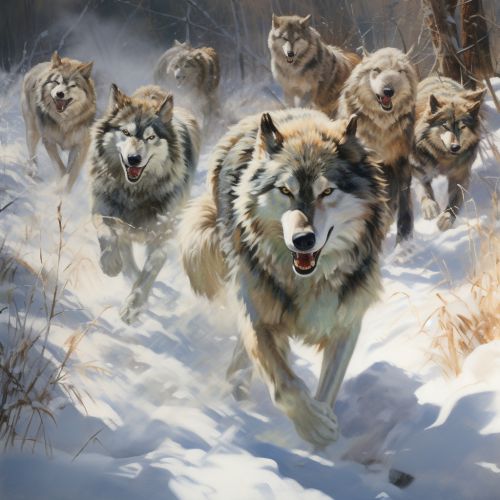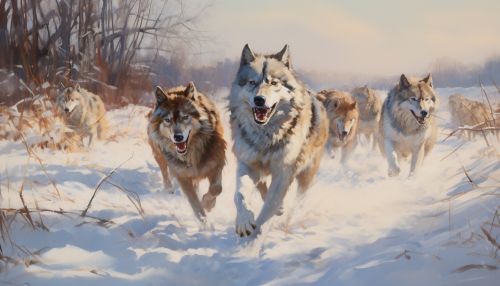Group hunting
Introduction
Group hunting is a predatory behavior exhibited by certain species of animals where individuals work together to capture prey. This behavior is observed in a variety of animal species, from mammals such as lions and wolves, to birds like harris's hawks, and even in some species of fish and insects.


Evolutionary Advantages
The evolution of group hunting is thought to be driven by several factors. Predators that hunt in groups can take down larger and more formidable prey than they could alone, increasing their access to food resources. Group hunting also allows for division of labor, with different individuals playing different roles in the hunt, which can increase efficiency. Furthermore, hunting in a group can reduce the risk of injury to individual hunters, as the prey's defensive efforts are spread across multiple attackers.
Strategies and Techniques
Different species employ different strategies and techniques when hunting in groups. In some cases, the group may work together to surround and trap the prey, as seen in the hunting behavior of African wild dogs. In other cases, individuals may take turns chasing and tiring out the prey, a technique known as relay hunting, which is commonly used by some species of dolphins.
Communication and Coordination
Communication and coordination are key aspects of group hunting. Hunters need to coordinate their actions to effectively surround, chase, or trap their prey. This often involves complex communication, including vocal signals, body postures, and even chemical signals in some species. For example, meerkats use a variety of calls to coordinate their group hunts, while ants use pheromone trails to direct their fellow hunters to prey.
Social Structure and Group Hunting
The social structure of a species can greatly influence its hunting behavior. In species with a strong social structure, such as wolves or lions, the group's hunting behavior is often highly coordinated and involves complex strategies. In contrast, species with a less rigid social structure, such as some species of sharks, may exhibit group hunting behavior that is less coordinated and more opportunistic.
Impact on Prey Species
Group hunting can have significant impacts on prey species. It can influence the evolution of defensive strategies in prey species, such as the development of herding behavior or increased vigilance. Additionally, group hunting can impact the population dynamics of prey species, potentially leading to population declines if the hunting pressure is too high.
